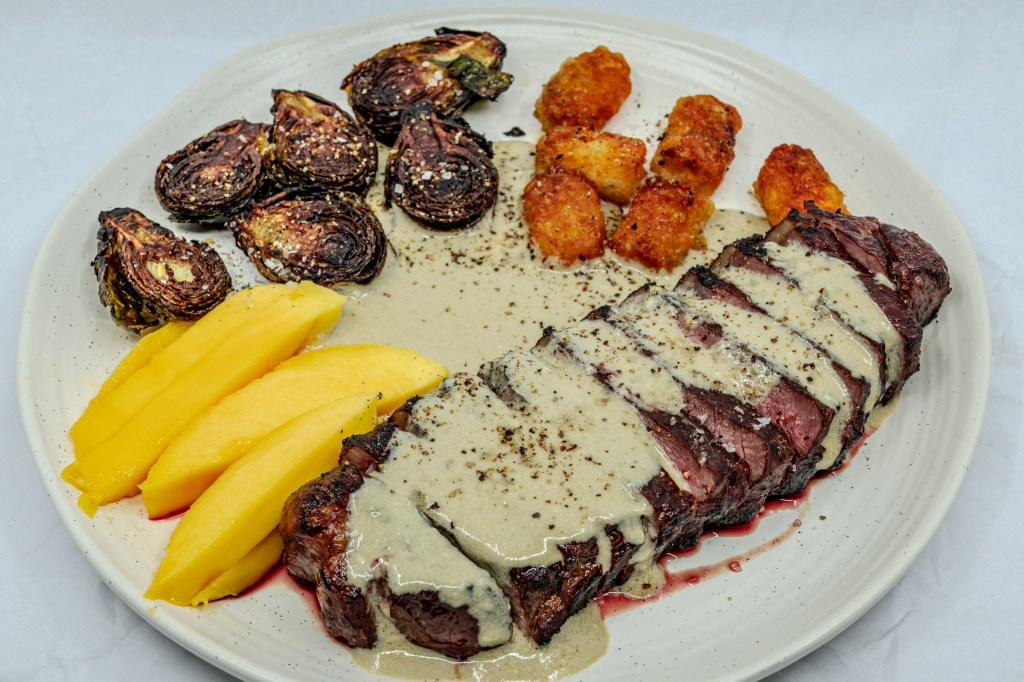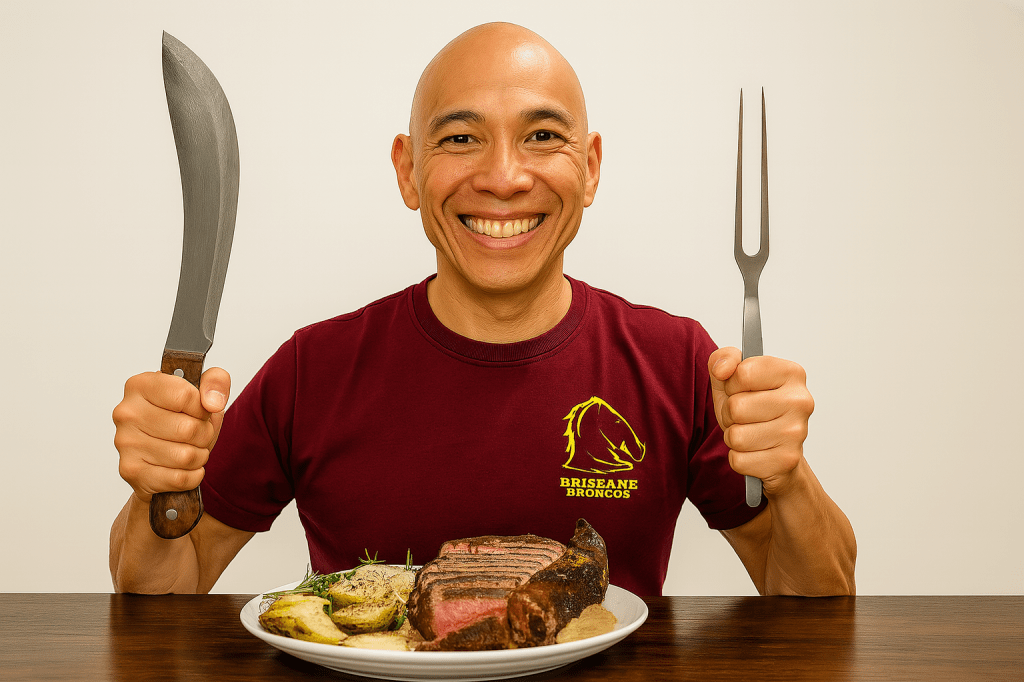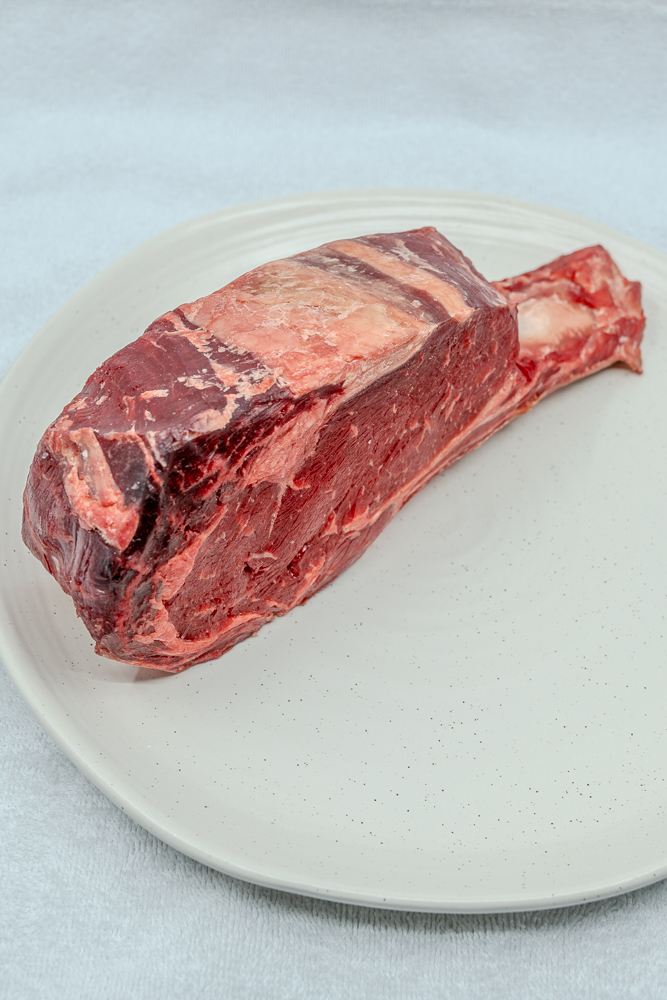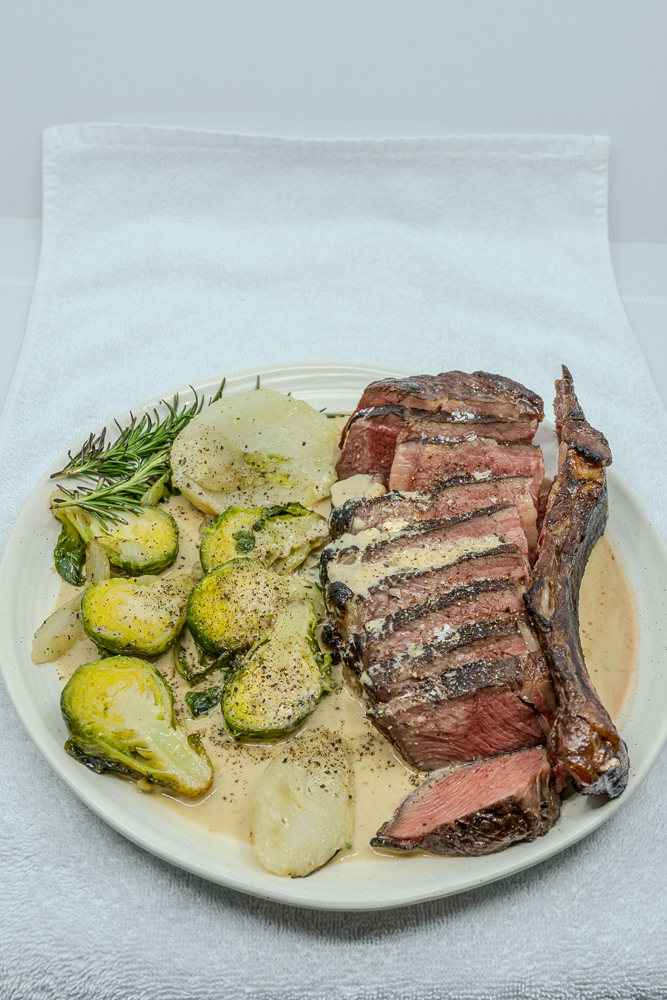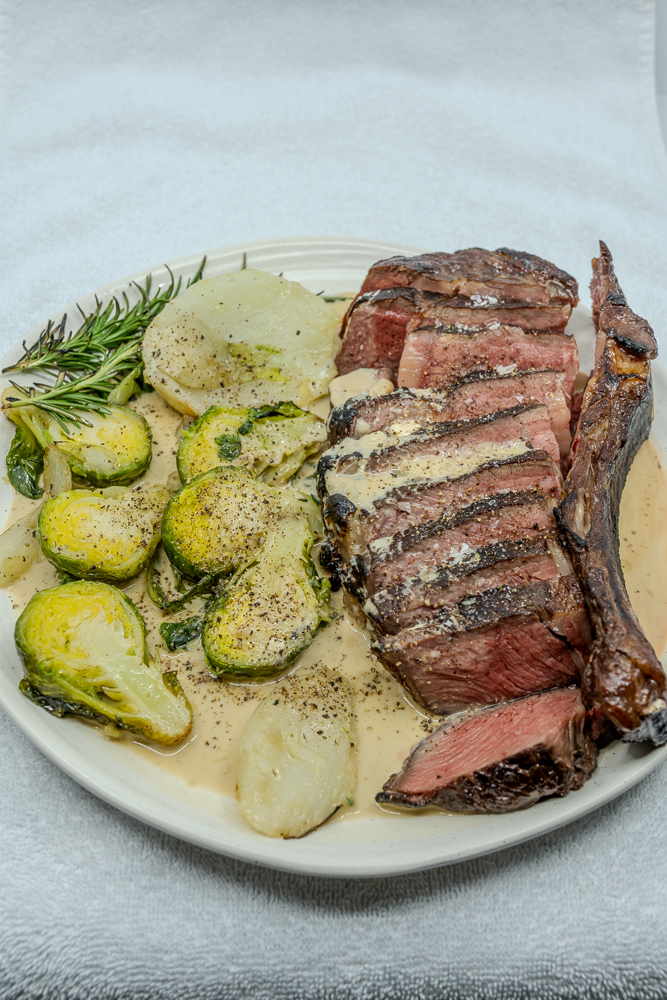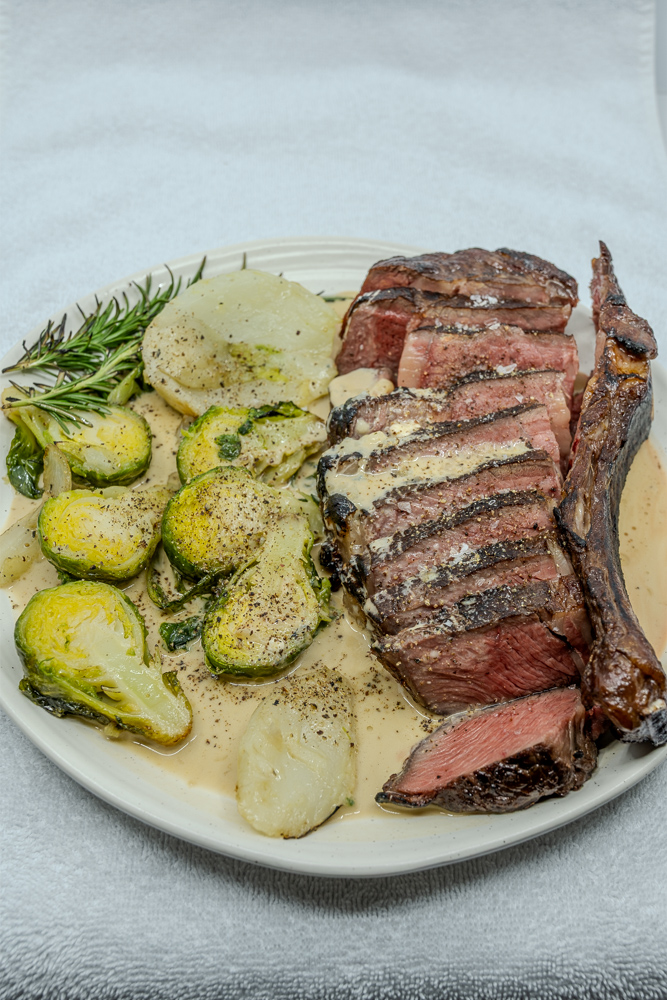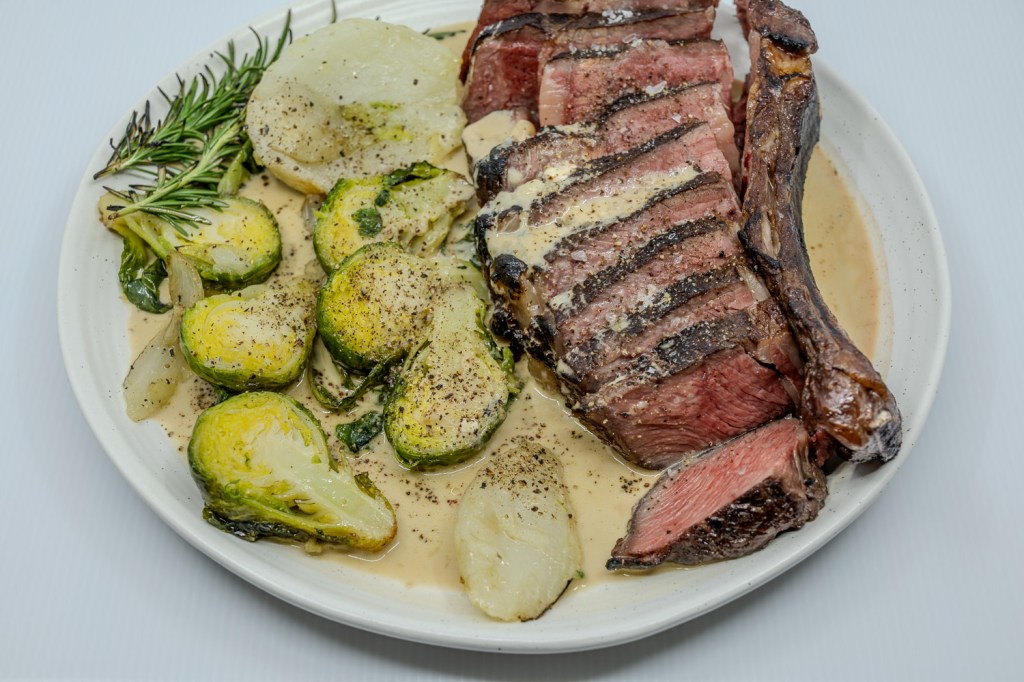I had a meeting this week with a former work colleague in Tasmania. Brussels sprouts came up in the conversation. I didn’t like them as a child, even when Mum cooked with bacon.
These days, though, I like them, especially when parboiled and finished in beef fat on a cast-iron pan. Crispy Brussels sprouts are now a favourite vegetable.
Barbecue “emergency”
During the week, I had some meetings that would extend late into the evening, so I carefully orchestrated the evening meal to fit within a short break.
I had my meat ready and was about to ignite the barbecue. I opened the bottle valve, then opened the barbecue valve and pressed the electric ignition switch. I saw and heard sparks, but saw no flames! The tank had gas. I disconnected the hoses and the regulator and reconnected them to reset the regulator. Still no flame. I removed the grill plates and checked the burners for blockages. Nup, the burners were clean, and all the holes were open. I deduced it was the regulator[i]. It had to be. It was too late in the evening, and I didn’t have time to drive to the hardware store. I had to cook my meat inside on the stove top. I’m sure it would have tasted better cooked on the barbecue.
The next morning, I drove to the hardware store before work and bought a new regulator. After installing it, I rejoiced at the sight and sound of a gas flame erupting from the burner tubing.
I use the barbecue nearly every night to cook meat. If the problem had been more difficult, I would have been unhappy.
Tonight’s meal needed the barbecue to work.
Recipe
Slow-cooked beef short ribs with Brussels sprouts fried in beef fat, served with blue-vein cheese and mustard sauce.
Ingredients
- Beef short ribs[ii]
- Salt
- Water
- Brussels sprouts[iii]
- Beef fat
- Butter
- Cream
- Cream cheese
- Mustard
- Blue vein cheese[iv]
Equipment
- Slow cooker
- Barbecue
- Gas torch
- Saucepan
Instructions
- Cook the beef short ribs with salt and water in the slow cooker. Cook on low heat for 8 hours.
- Cut the Brussels sprouts in half (longitudinally).
- Parboil the Brussels sprouts for 5 minutes.
- Drain the Brussels sprouts, lay them cut side down on a plate, and then place the plate in the freezer.
- Remove the ribs and keep one aside.
- Dry the surface with absorbent paper.
- Heat the barbecue, which contains a shallow cast-iron plate with beef fat from previous cooking sessions.
- Place the frozen Brussels sprouts on the cast-iron plate, cut side down.
- Heat some butter in a small saucepan, then slowly add the cream, cream cheese, and mustard. Crumble in the blue vein cheese and keep stirring until a sauce forms.
- Place the sequestered beef short rib on a hot grill plate to sear the surface.
- Add to the searing with a gas torch.
- Transfer the beef short rib and Brussels sprouts to a dinner plate.
- Drizzle the blue vein cheese and mustard sauce over the meat and Brussels sprouts.
- Use a sharp, non-serrated dinner knife to avoid tearing the meat. You want to cut cleanly against the grain. Perfectly cooked meat won’t squash between the knife and bone. The meat will come away from the bone easily and have a bit of “bounce” when pressed.
Thoughts on the meal
The meat was tender and combined well with the crispy Brussels sprouts and the creamy, pungent sauce.
The meat came away from the bone easily but wasn’t mushy. I cut the meat with a sharp knife. It cut easily into bite-sized portions and then combined with sauce and Brussels sprouts for a bite with incredible flavour and mouthfeel.
I will definitely cook this again.
Photographs
This is a gallery of images. Select one and then scroll through them.


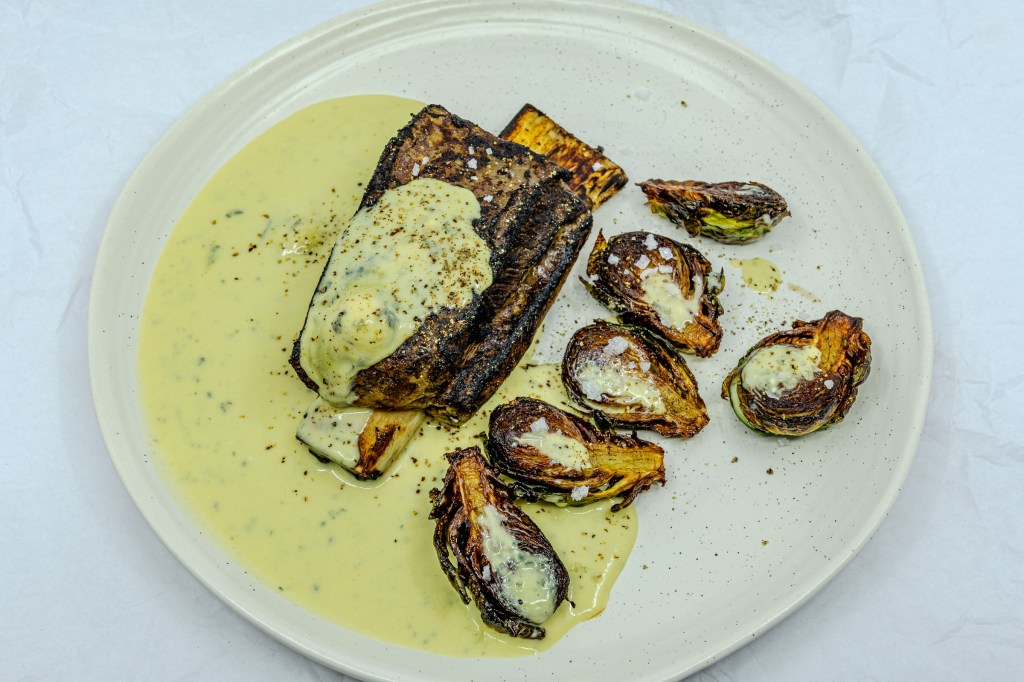
Questions
How often do you cook with a barbecue?
Have you ever had a barbecue “emergency?”
Do you like Brussels sprouts? How do you want them cooked?
[i] A barbecue gas regulator is a compact device attached to your LPG cylinder that reduces high cylinder pressure to a safe, steady flow for cooking. In Australia, the standard is 2.75 kPa, with modern LCC27 fittings offering improved safety. Regulators are typically sold with hoses (PVC or braided) and may include gauges for monitoring gas levels. They are essential for safe and reliable barbecue operation. I bought the cheapest one I could find. It didn’t come with a gauge.
[ii] Beef short ribs are a richly marbled cut taken from the chuck, plate, or rib areas, prized for their deep flavour and tenderness when slow-cooked.
[iii] Brussels sprouts are small, leafy green vegetables that resemble miniature cabbages, belonging to the Brassica oleracea species. They are cultivated for their edible buds.
[iv] Blue vein cheese (often called blue cheese) is a type of cheese made from cow’s, sheep’s, or goat’s milk that is ripened with cultures of the fungal mould Penicillium roqueforti, giving it distinctive blue, green, or grey veins throughout its body and a strong, pungent flavour.

